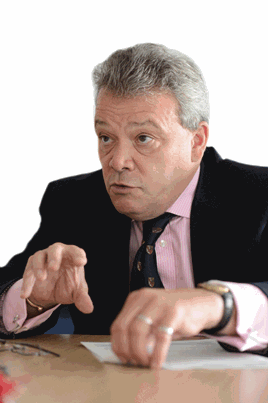The upshot will be that the small but rapidly growing Cleethorpes holiday traffic will be choked off, because most of it is families with buggies.
NR’s answer, in a recent letter to Fraser Pithie, who complained about this ludicrous situation, was that the bridge would be replaced as planned; there would be no ramps; the crossing was coming out; and that Northern would have to send passengers wishing to move between platforms on a 40-minute, 20-mile taxi journey!
You really couldn’t make it up. I tell Prosser my instinct is that this is more about NR notching up crossing closures, and that it seems to care little that in reducing its own perceived risk, it is ignoring the significantly increased risk to which passengers are being exposed by being transferred to road (where more than 3,000 people a year are killed).
To his credit, Prosser is aware of the Gainsborough situation, and says he is looking into it, intends to get to the bottom of it, and then talk to NR. I get the feeling that beneath the polite and careful answer, he shares my disquiet at this silly and perverse situation.
It also strikes me that if NR put in a properly risk-assessed and equipped foot crossing at Gainsborough Central, you could save hundreds of thousands of pounds - you could then close the bridge and offer it to the heritage railway sector.
Why spend £500,000 on a bridge, when a perfectly appropriate crossing would cost maybe tens of thousands? What does this say about NR’s asset management out on the network? How much money is being needlessly spent to create a less usable, less busy railway? Should NR be allowed to make the railway less easy to use like this - at the same time as increasing Northern’s costs in such a ludicrous manner?
“The important thing is to come back to what we’re trying to achieve,” Prosser replies. “What we’re trying to achieve with a whole range of things, including closures, is only part of it. Yes, we want to reduce risk to members of the public when crossing the railway. We’re trying to reduce harm to people.”
Even if it means putting them on a 20-mile, 40-minute taxi ride where they are at much greater risk of harm? Does reducing harm to passengers only count as long as the risk is palmed off elsewhere?
“No! Absolutely not!” he insists. “What it means is NR making sensible, risk-based decisions about either the removal of a crossing or improving the technology of the crossing, improving the warnings for people… in other words, improving the ability of people to use that crossing.
“One project, which should hopefully start to be rolled out soon, is research on signage at crossings. It has become too cluttered - we need to define the minimum but most powerful signage you can give people at crossings.
“This is very good research done through the Rail Safety and Standards Board. We’re just going through the approvals process before rolling it out. It’s a whole plethora of things, and education comes into it.
“I always talk about three Es with level crossings. It’s enforcement, which is helping on the red light enforcement as well as with NR. It’s also about educating people. And there is engineering, too - but engineering is a whole different set of things. Yet again, it comes back to this management maturity.”
So in instances such as Gainsborough Central, shouldn’t it just be closure at all costs and get rid of it?
“Correct. Closure is a very important option, of course, because it has other benefits for the railway. For example, we have real issues with level crossings having an impact on the capability of the railway.
A good example is the Great Eastern Main Line from Liverpool Street to Norwich. Also crossings on the East Coast line, which not only affect performance on the railway, but which could also have a very major impact on people trying to use them either on foot or in cars. It’s all about management maturity and managing down risk in a proportionate way.”
What about workforce safety? We have sadly seen fatalities here in recent years, and NR Chief Executive Mark Carne has been especially critical of his own organisation in this respect. Is this a matter of culture - or company process?
“It’s a mixture of both,” Prosser replies. “There are two aspects: infrastructure and construction work on the main line railway is our biggest concern, but also electrical safety. We’ve seen fatalities that have been avoidable. A major cause has been culture, where risks have been taken with some of these processes.
“NR is slowly bringing in a new set of processes that are simpler and which mean more effective planning. In some cases, a Controller of Site Safety would be given a safe system of work to operate that he hadn’t even been involved in producing. We must get the people doing the work to plan the work. We need to see one person in charge.
“In the past, there have been cases where there is one Controller of Site Safety who is there to protect and control the safety of the workforce from trains, but in addition there’s an engineering supervisor to control work safety.
“That’s not, in my book, the right way of doing it. You need one person, and it’s now happening - we are seeing one person in charge of not just the work, but also the safety of the people. You thereby create accountability back, with management maturity at ground level, with systems and processes that are straightforward and easy to use. People then don’t circumvent them and make up their own site systems at work.














Login to comment
Comments
No comments have been made yet.